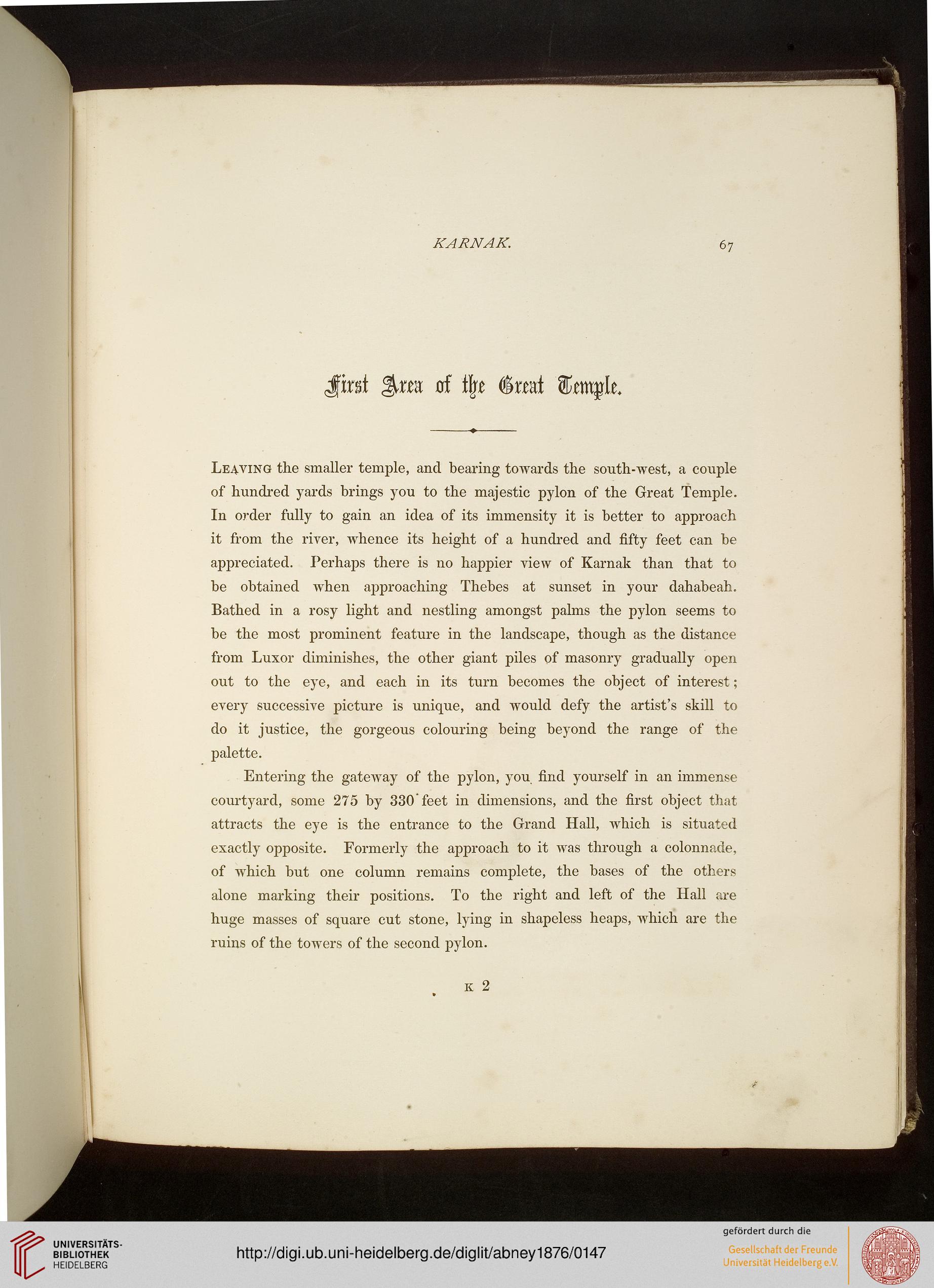KARNAK.
67
Jtessl %m of iff* feat JCtrnpfc
Leaving the smaller temple, and bearing towards the south-west, a couple
of hundred yards brings you to the majestic pylon of the Great Temple.
In order fully to gain an idea of its immensity it is better to approach
it from the river, whence its height of a hundred and fifty feet can be
appreciated. Perhaps there is no happier view of Karnak than that to
be obtained when approaching Thebes at sunset in your dahabeah.
Bathed in a rosy light and nestling amongst palms the pylon seems to
be the most prominent feature in the landscape, though as the distance
from Luxor diminishes, the other giant piles of masonry gradually open
out to the eye, and each in its turn becomes the object of interest;
every successive picture is unique, and would defy the artist's skill to
do it justice, the gorgeous colouring being beyond the range of the
palette.
Entering the gateway of the pylon, you, find yourself in an immense
courtyard, some 275 by 330'feet in dimensions, and the first object that
attracts the eye is the entrance to the Grand Hall, which is situated
exactly opposite. Formerly the approach to it was through a colonnade,
of which but one column remains complete, the bases of the others
alone marking their positions. To the right and left of the Hall are
huge masses of square cut stone, lying in shapeless heaps, which are the
ruins of the towers of the second pylon.
K 2
67
Jtessl %m of iff* feat JCtrnpfc
Leaving the smaller temple, and bearing towards the south-west, a couple
of hundred yards brings you to the majestic pylon of the Great Temple.
In order fully to gain an idea of its immensity it is better to approach
it from the river, whence its height of a hundred and fifty feet can be
appreciated. Perhaps there is no happier view of Karnak than that to
be obtained when approaching Thebes at sunset in your dahabeah.
Bathed in a rosy light and nestling amongst palms the pylon seems to
be the most prominent feature in the landscape, though as the distance
from Luxor diminishes, the other giant piles of masonry gradually open
out to the eye, and each in its turn becomes the object of interest;
every successive picture is unique, and would defy the artist's skill to
do it justice, the gorgeous colouring being beyond the range of the
palette.
Entering the gateway of the pylon, you, find yourself in an immense
courtyard, some 275 by 330'feet in dimensions, and the first object that
attracts the eye is the entrance to the Grand Hall, which is situated
exactly opposite. Formerly the approach to it was through a colonnade,
of which but one column remains complete, the bases of the others
alone marking their positions. To the right and left of the Hall are
huge masses of square cut stone, lying in shapeless heaps, which are the
ruins of the towers of the second pylon.
K 2





